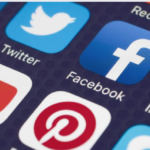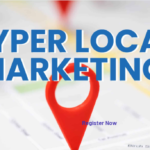A powerful strategy for media buying is one of the most important tools a marketer can employ to increase brand visibility and audience engagement. One of the keys to an effective strategy is thoughtful management of your budget for paid advertising.
Media buying is an investment that should provide exponential returns. Corporations like American Express, GM, and AT&T are spending billions on ads. But you don’t need to spend an astronomical amount of money to influence those best-fit customers who will connect with your brand and buy from you.
Considering costs should be at the core of your media planning and advertising strategy. That means looking at which platforms and channels offer you the most reach for the lowest price and, more importantly, help you achieve your goals.
Calculating the cost of media buying & creating a budget
While there isn’t a universal dollar amount that works for every business, there are ways to determine how much you should be spending on paid advertising media. Before you set about paying for advertising, start with your overarching business goals––which are likely to include increasing revenues. Then, you can base your strategy on a concrete target that’s easy to measure success against.
For example, if you want to bring in $100,000 in revenue from marketing and you’ve determined that owned and earned channels could bring in 75% of that revenue, you’ll be looking to generate $25,000 from advertising media buying. If you know that your return on ad spend (ROAS) is typically $2.50, then you’ll need to invest $10,000 in your paid ad campaigns.
With these numbers in mind, you can develop an advertising media plan based on which channels will help you see the highest ROI with the budget you have.
When is media buying most effective?
There are a few examples of when spending money on media buying is especially effective for most businesses. These types of marketing goals are very achievable with the help of paid advertising.
When you’re launching a product or service into a new market
Paid advertising is an effective tactic if you’re a startup looking to get your name out there or an established company launching a new product line aimed at a new demographic. In general, roughly 30% of your media budget should be allocated to top of funnel tactics that build awareness and bring people onto your website (or into your brick-and-mortar store). If you’re starting from scratch, paid media helps you go from zero visibility to market traction quickly.
When you need to remarket or re-engage people already further down your funnel
79% of consumers say they will only engage with an offer if it reflects previous interactions they’ve had with the brand. It’s a great investment to rope people in when they’ve engaged with your brand but haven’t converted or bring them back for another purchase. At this stage, you can focus on customer experience and revealing unrealized value for the potential customer.
When you’re trying to reach a niche audience
One of the 247 digital marketing benefits of digital media buying––especially direct buys and sponsorships––is that you can target a very specific group of people. 88% of U.S. marketers report seeing measurable improvements through personalizing their ad campaigns, with over half seeing increased outcomes of more than 10%.
Focus on advertising media planning to drive ROI
Media buying starts with media planning, which can include your affiliate marketing strategy. Determining what kinds of content will resonate with and provide value for your audience will help you get the most bang for your buck when you’re paying for advertising. While the purchase of ad space can get your brand in front of your intended audience, it’s the efficacy of the content (the copy, creative, and CTAs) that will drive engagement and conversions.
One of the most important parts of the content marketing lifecycle is getting all of that incredible work out in front of an audience (see our Three Piece Meal approach to content marketing). Understanding what types of content your audience likes can help you spend money where it matters. If customers already love your educational video content, for example, spending some money on YouTube video ads will likely be a good channel for you.
Choose the best paid media channels for your goals
Different advertising channels work for different stages of your funnel and different audience segments. Choosing the right methods for paid advertising can help you spend your budget more wisely.
With the rise of programmatic advertising, you can save yourself a lot of time (and, therefore, money) purchasing digital ad space. Programmatic ads accounted for 86.3% of digital display ad spend in the U.S. in 2020. Programmatic advertising leverages AI to automate media buying, rather than manually negotiating with publishers. It allows you to efficiently purchase and optimize ads across display, video (including pre-roll and ConnectedTV), audio, and digital out-of-home (DOOH) ads.
A good starting point for most paid media is pay-per-click (PPC) campaigns through Google Ads. You can easily set up targeted search, display, YouTube, and Shopping ads on the platform. Cost-per-click (CPC) varies depending on the industry you’re targeting and the keywords you’re bidding for. The CPC cost structure is flexible for any budget and it’s easy to run low-cost tests. The average CPC in Google Ads is $2.69 for search and $0.63 for display.
In addition to search and display advertising across the web, you can also pay for reach on your social media channels. 91% of marketers focus most of their paid social efforts on Facebook, followed by Instagram and YouTube. CPC for Facebook display ads can run around $0.39. Depending on your objectives, Facebook display ads are generally more cost-efficient than their Google display counterparts. They’re also more effective for mid- and bottom-funnel advertising. Lead generation forms and dynamic product ads enable you to drive engagement and conversions directly from the platform.
Traditional channels like radio, television, print, or out-of-home (OOH) mediums like billboards and bus stop ads are a good option if you have a high budget for top-of-funnel brand awareness. On the low end, bus bench ads can go for around $250 per month. Bus shelter ads, on the other hand, can run up to $6,500 per month. If 25,000 cars pass by your ads every day, that’s 750,000 impressions monthly, but this can vary. As part of your strategy and budget, keep in mind that OOH ads are priced differently depending on their location.
If you want to get a little more granular, Hubspot has a quick advertising ROI calculator to help you get an initial idea of how much you should spend on your next digital advertising campaign.
Leverage your data
Setting up the right tracking and analytics allows you to see the success of your current campaign and that data will make it much easier to create media budgets in the future. Setting different KPIs for each channel and each audience will help you see which avenues are working for you.
Understand customer LTV
The higher your customer lifetime value (LTV), the more you can justify spending on attracting new customers. Keep in mind that it’s five to 25 times more expensive to acquire a customer than it is to retain one.
Understand your conversion rate & lead-to-customer rate
If website conversion rates are low, it might be more effective to optimize your pages before bringing more people to the site through paid advertising. Understanding the rate at which those leads become customers can also clue you into opportunities to streamline those interactions. You can also leverage offline conversion tracking to see whether your digital advertising efforts are resulting in real-world sales. Spending smart on media buying and paid advertising can help you stand out in your industry while driving revenue for your business.





